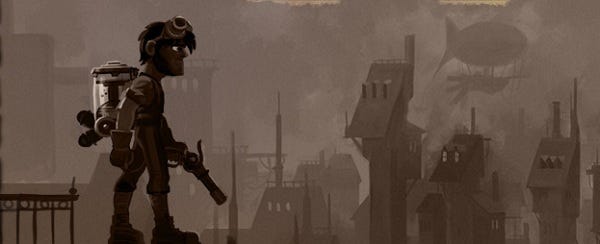Technically Leaking: Vessel's Fantastic Fluids
From the first video I saw, Vessel occupied a special place in my thoughts. The area it resides in is a large theme park grafted onto my occipital lobe. All of the rides and attractions that have sprouted there are based on interesting use of technology in games. Some are impressive structures of light and fury, while others are more subtle. Vessel's contribution is a cavernous chamber, lit by lava and fluorescent goo that drips, splashes and streams. There are log flumes within and water slides, everything liquid that can be imagined in fact. Now that Vessel has been released from the faucet, Strange Loop Games have deemed fit to share some early experiments and tech demos showing how their marvelous physics evolved.
Lesson number one: water isn't water at all, it's lots of tiny balls!
Wait, what's that? Water in the real world is actually lots of tiny balls as well? Don't be ridiculous; water is wet. Now, let's move on to see rain and a humanoid, which is almost certainly the name of an achingly hip indie band.
The next video shows an early room design, which will be notable to anyone who has played the game. It's a physics puzzle, just as in the finished game, but there are no Fluros to interact with, helping and hindering in almost equal measure.
Although the next video doesn't contain a puzzle as such, it's potentially a breakthrough moment in the design, marking the point when the liquid creatures became solutions in and of themselves. Here, a spidery Fluro forms a bridge.
Last but not least - although it would make sense to leave the worst 'til the end when most people have already wandered off - here's a bit of lighting tech. I strongly suspect there's a clustering algorithm in use here, being used to identify key points to put point-lights at. Those point-lights would then vary in brightness dependent on the density of the cluster. It's a neat solution for lighting that has to work with sprayed liquids.
When I say I 'strongly suspect' I mean, of course that I 'read on the development blog that'.
The game's final application of all that playful technology is joyous and if you haven't at least tried the demo you jolly well should.


